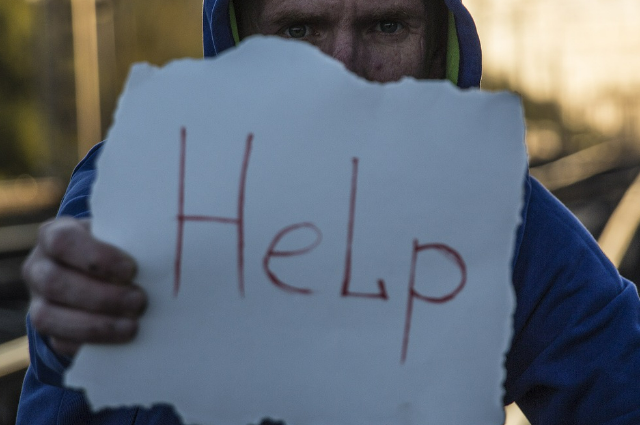
Image by Лечение Наркомании from Pixabay
Introduction
This study provides a comprehensive analysis of two significant public health concerns in India: the rising suicide rate in adults and the escalating number of murders associated with drug addiction. Both issues have a substantial impact on individuals, families, and communities, necessitating urgent attention from healthcare professionals, policymakers, and society as a whole.
Rising Suicide Rate in Adults
Background
Suicide is a tragic outcome of mental health disorders, social factors, and other underlying causes. In recent years, there has been a concerning increase in suicide rates among adults in India, warranting careful examination and intervention.
Statistical Overview
- According to the World Health Organization (WHO), suicide is the 10th leading cause of death in India, accounting for approximately 135,000 deaths each year.
- The suicide rate in India has increased by 50% in the past decade.
- The highest suicide rates in India are among young adults (15-29 years old) and older adults (60 years and older).
- Men are more likely to die by suicide than women.
- Mental health disorders, such as depression, anxiety, and bipolar disorder, are major risk factors for suicide.
- Other risk factors for suicide include substance abuse, family history of suicide, and stressful life events.
Contributing Factors
A multitude of factors contributes to the rising suicide rate in adults in India:
- Mental health disorders: Conditions such as depression, anxiety, bipolar disorder, and substance abuse significantly increase the risk of suicide.
- Socioeconomic challenges: Economic instability, unemployment, financial stress, and lack of social support systems can exacerbate feelings of hopelessness.
- Access to means: Easy access to lethal means, such as firearms or medications, increases the risk of impulsive suicide attempts.
- Stigma and barriers to care: Societal stigma surrounding mental health issues and inadequate access to mental healthcare prevent individuals from seeking timely help.
Prevention and Intervention Strategies
Addressing the rising suicide rate in adults in India requires a comprehensive approach:
- Public awareness campaigns: Launching targeted education campaigns to reduce stigma, increase awareness of available mental health resources, and promote early intervention.
- Enhanced mental healthcare: Expanding access to mental health services, ensuring affordability, and integrating mental health screening into primary care settings.
- Restricting access to lethal means: Implementing policies and regulations to limit access to firearms, toxic substances, and other means of self-harm.
- Strengthening social support systems: Developing community-based programs that foster social connectedness and provide support networks for individuals at risk.
- Crisis hotlines and support services: Establishing easily accessible helplines staffed by trained professionals and expanding crisis intervention services.
Rising Number of Murders due to Drug Addiction
Background
Drug addiction is a complex health issue with severe consequences, one of which is the increasing number of murders associated with drug-related activities. Understanding this phenomenon is crucial for effective intervention and prevention strategies.
Statistical Overview
- According to the National Crime Records Bureau (NCRB), there were 32,558 drug-related murders in India in 2020.
- This represents a 70% increase from the number of drug-related murders in 2010.
- The majority of drug-related murders involve individuals who are under the influence of drugs at the time of the crime.
- Drug-related murders are disproportionately concentrated in urban areas and among marginalized communities.
Contributing Factors
Several factors contribute to the rising number of murders associated with drug addiction:
- Drug trade and gang activities: The illicit drug trade often fuels violence, as criminal organizations engage in territorial disputes, revenge, and competition for control over drug markets.
- Substance-induced psychosis: Prolonged drug abuse can induce psychotic symptoms, leading to impaired judgment, aggression, and violent behavior.
- Economic desperation: Individuals struggling with addiction may resort to criminal activities, including theft and violence, to sustain their drug habits.
Prevention and Intervention Strategies
Addressing the rising number of murders due to drug addiction requires a multifaceted approach:
- Law enforcement efforts: Strengthening law enforcement strategies to target drug trafficking, disrupt organized crime networks, and intercept the supply chain of illicit drugs.
- Substance abuse treatment: Expanding access to evidence-based substance abuse treatment programs, including detoxification, counseling, and rehabilitation services.
- Mental health support: Integrating mental health services into addiction treatment programs, as individuals with substance use disorders often have underlying mental health conditions.
- Harm reduction measures: Implementing harm reduction strategies such as needle exchange programs, overdose prevention initiatives, and drug checking
Conclusion
The rising suicide rate in adults and the escalating number of murders due to drug addiction pose significant challenges to public health and safety in India. Understanding the contributing factors and implementing effective prevention and intervention strategies are crucial to mitigating these issues. Collaboration among healthcare professionals, law enforcement agencies, policymakers, and the community is essential to address these complex problems and promote healthier and safer societies.
